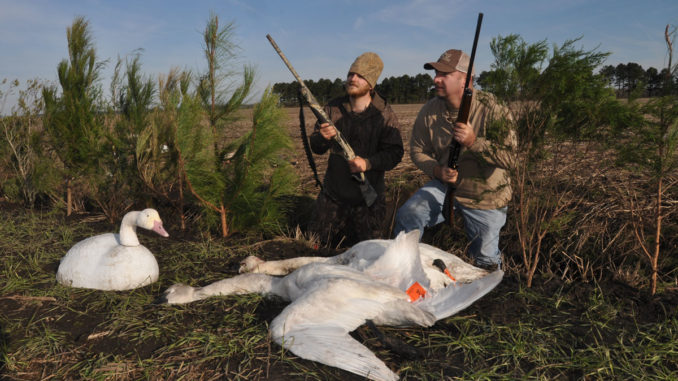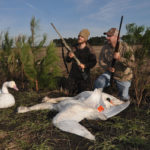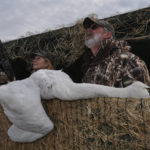
Blinds for hunting tundra swans can be sturdy, well-built forts or temporary structures thrown together the night before a hunt is scheduled.
Willie Allen of Outback Adventures builds his blinds out of framing lumber and plywood. He covers them with landscaping mats made of excelsior and plastic netting. The camouflage blends perfectly with harvested corn or soybean stubble.
He situates his blinds on the edges of farm ditches and puts planks across the ditches so hunters can walk across them to retrieve their swans.
To sweeten the deal, Allen sometimes has winter wheat planted in front of the blinds. Tundra swans eat winter wheat, and the white swan decoys stand out against the green background.
Hunting from a blind is easier for older and younger hunters who may have difficulty sitting in a water-filled ditch. A blind also helps hide the motion an excited dog might make when swans are calling and decoying.
Tyler O’Dell of Wildwing Adventures uses makeshift blinds consisting of cut pine saplings stuck into the top of a ditch bank. The advantage of using this minimal approach is that hunters can move to the exact spot in a field where birds have been feeding or resting.
Swans are becoming more wary of decoys and hunters year by year, so moving to where the birds want to go ensures the decoys will do their job of bringing them into shotgun range. Hunters can kneel, sit on folding stools or sit on the opposite ditch bank with most of the pines situated in front of them to hide their outlines from approaching swans.






Be the first to comment